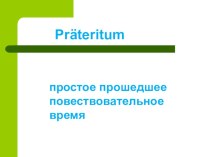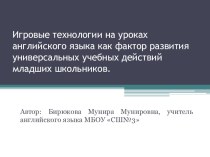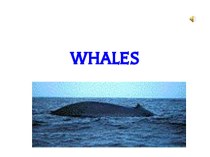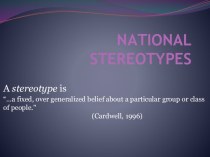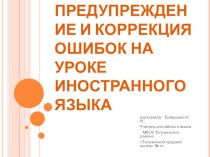- Главная
- Разное
- Бизнес и предпринимательство
- Образование
- Развлечения
- Государство
- Спорт
- Графика
- Культурология
- Еда и кулинария
- Лингвистика
- Религиоведение
- Черчение
- Физкультура
- ИЗО
- Психология
- Социология
- Английский язык
- Астрономия
- Алгебра
- Биология
- География
- Геометрия
- Детские презентации
- Информатика
- История
- Литература
- Маркетинг
- Математика
- Медицина
- Менеджмент
- Музыка
- МХК
- Немецкий язык
- ОБЖ
- Обществознание
- Окружающий мир
- Педагогика
- Русский язык
- Технология
- Физика
- Философия
- Химия
- Шаблоны, картинки для презентаций
- Экология
- Экономика
- Юриспруденция
Что такое findslide.org?
FindSlide.org - это сайт презентаций, докладов, шаблонов в формате PowerPoint.
Обратная связь
Email: Нажмите что бы посмотреть
Презентация на тему Henry Wadsworth Longfellow-poet and translator
Содержание
- 2. Henry Wadsworth Longfellow (February 27, 1807 –
- 3. Longfellow was born in Portland, Maine, which
- 4. His first major poetry collections were Voices
- 5. His first wife Mary Potter died in
- 6. Longfellow wrote predominantly lyric poems, known for
- 7. Though much of his work is categorized
- 8. Longfellow often used didacticism in his poetry,
- 9. In fact, Longfellow rarely wrote on current
- 10. He was also important as a translator;
- 11. In 1874, Longfellow oversaw a 31-volume anthology
- 12. Скачать презентацию
- 13. Похожие презентации
Henry Wadsworth Longfellow (February 27, 1807 – March 24, 1882) was an American poet and educator whose works include "Paul Revere's Ride", The Song of Hiawatha, and Evangeline. He was also the first American to translate

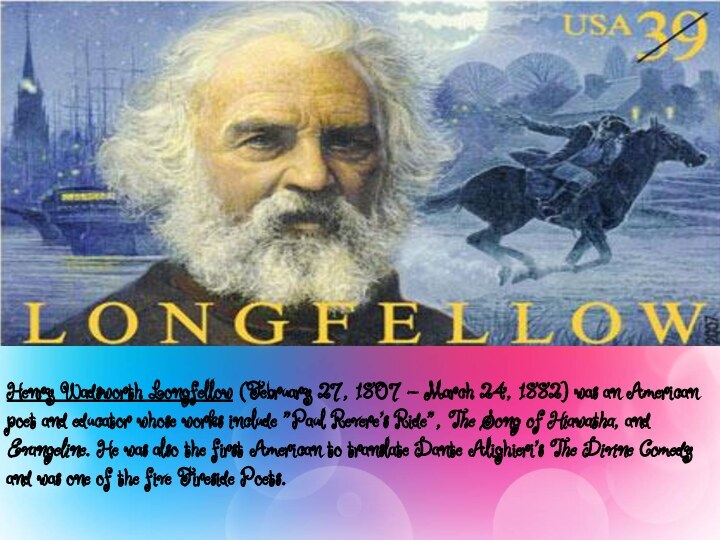

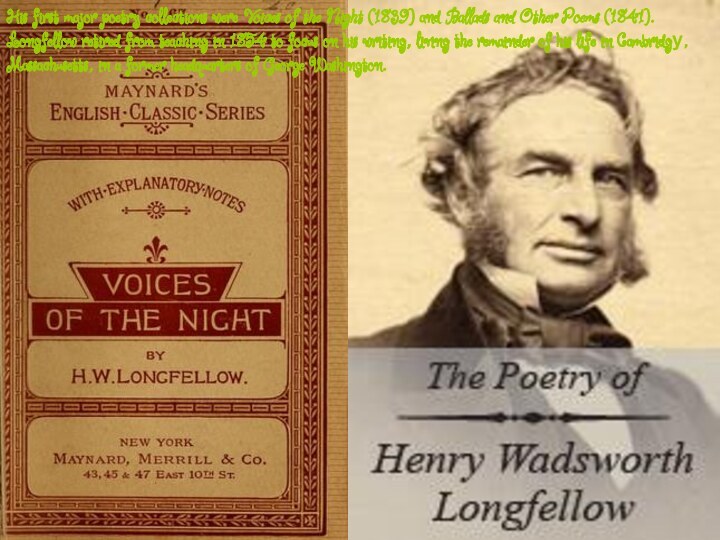
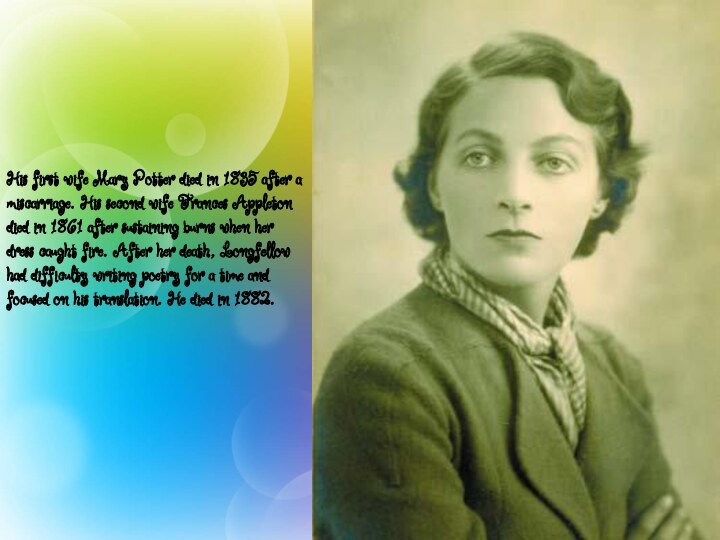
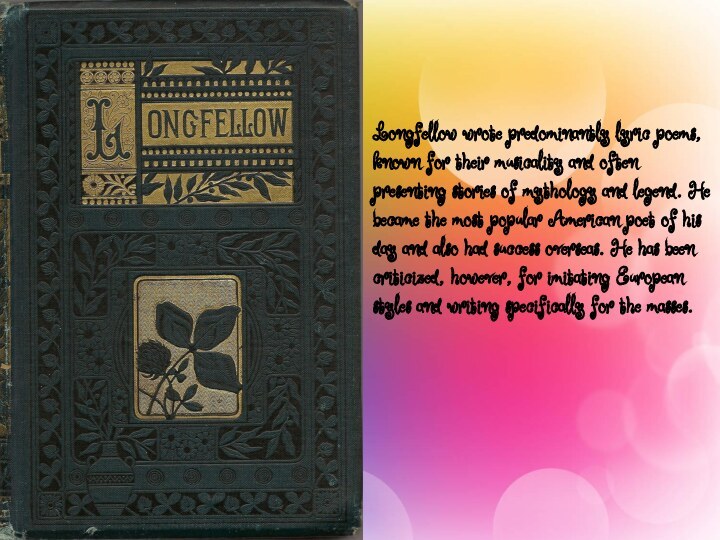
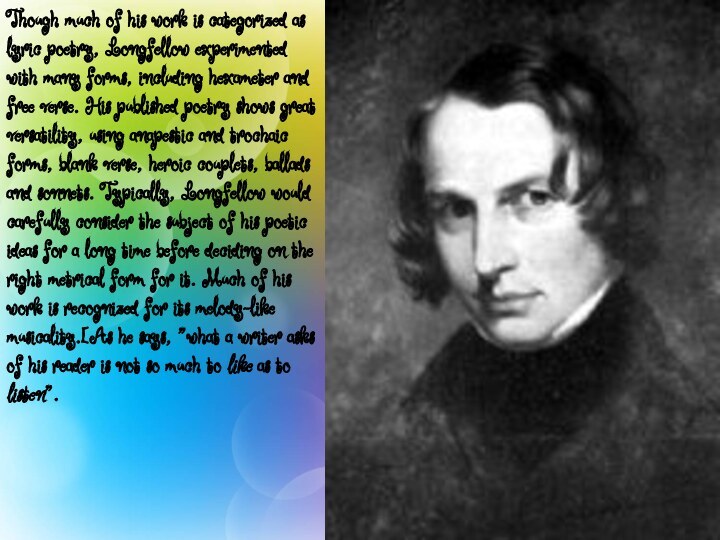
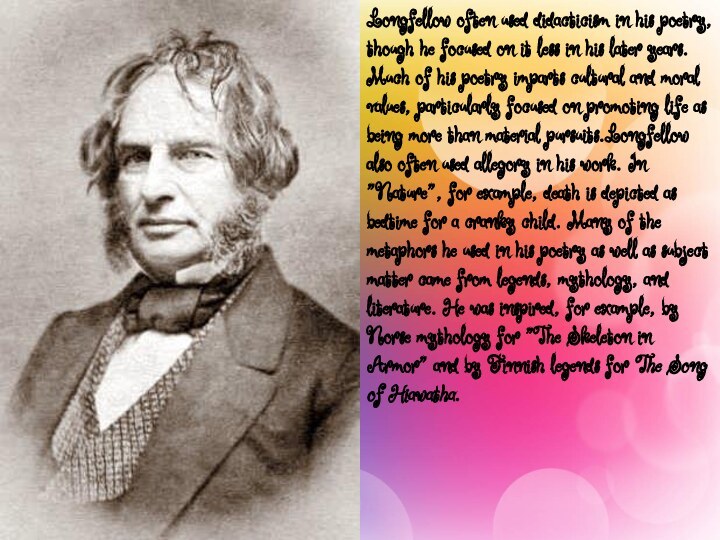
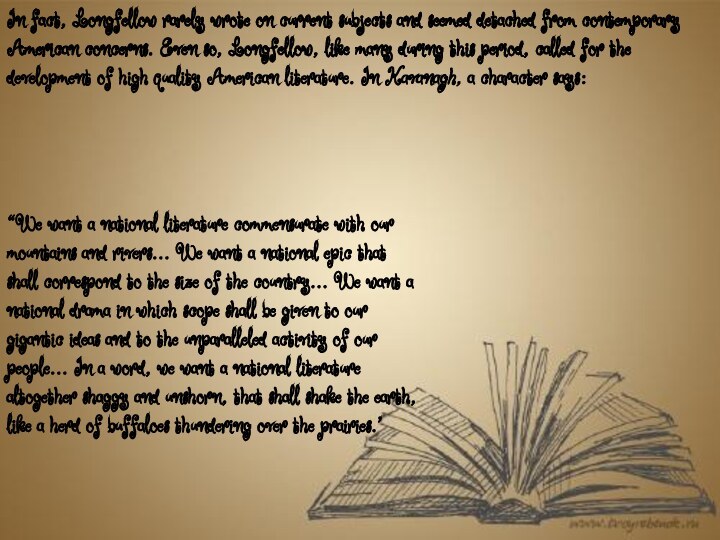
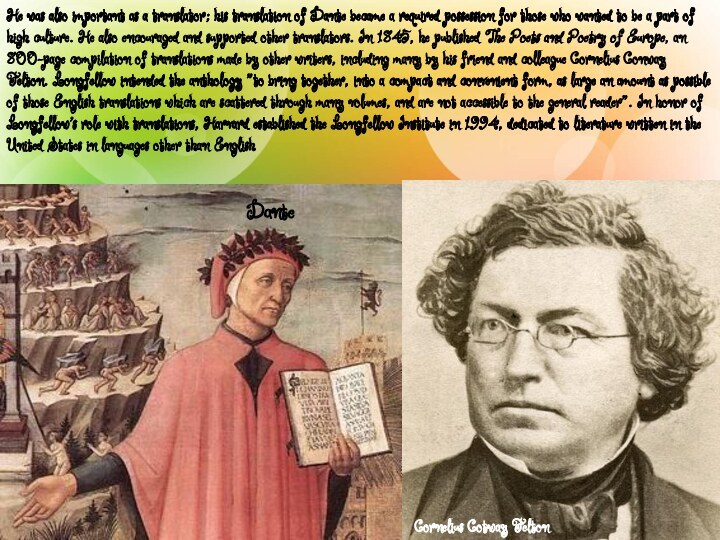
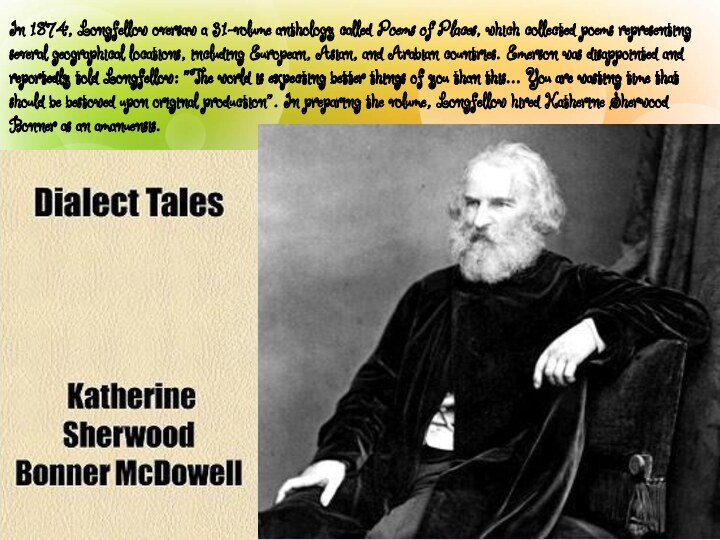

Слайд 3 Longfellow was born in Portland, Maine, which was
then a part of Massachusetts. He studied at Bowdoin
College. After spending time in Europe he became a professor at Bowdoin and, later, at Harvard College. Bowdoin College
Portland, Maine
Harvard College
Слайд 4 His first major poetry collections were Voices of
the Night (1839) and Ballads and Other Poems (1841).
Longfellow retired from teaching in 1854 to focus on his writing, living the remainder of his life in Cambridgу, Massachusetts, in a former headquarters of George Washington.Слайд 5 His first wife Mary Potter died in 1835
after a miscarriage. His second wife Frances Appleton died
in 1861 after sustaining burns when her dress caught fire. After her death, Longfellow had difficulty writing poetry for a time and focused on his translation. He died in 1882.Слайд 6 Longfellow wrote predominantly lyric poems, known for their
musicality and often presenting stories of mythology and legend.
He became the most popular American poet of his day and also had success overseas. He has been criticized, however, for imitating European styles and writing specifically for the masses.Слайд 7 Though much of his work is categorized as
lyric poetry, Longfellow experimented with many forms, including hexameter
and free verse. His published poetry shows great versatility, using anapestic and trochaic forms, blank verse, heroic couplets, ballads and sonnets. Typically, Longfellow would carefully consider the subject of his poetic ideas for a long time before deciding on the right metrical form for it. Much of his work is recognized for its melody-like musicality.[As he says, "what a writer asks of his reader is not so much to like as to listen".Слайд 8 Longfellow often used didacticism in his poetry, though
he focused on it less in his later years.
Much of his poetry imparts cultural and moral values, particularly focused on promoting life as being more than material pursuits.Longfellow also often used allegory in his work. In "Nature", for example, death is depicted as bedtime for a cranky child. Many of the metaphors he used in his poetry as well as subject matter came from legends, mythology, and literature. He was inspired, for example, by Norse mythology for "The Skeleton in Armor" and by Finnish legends for The Song of Hiawatha.Слайд 9 In fact, Longfellow rarely wrote on current subjects
and seemed detached from contemporary American concerns. Even so,
Longfellow, like many during this period, called for the development of high quality American literature. In Kavanagh, a character says:“We want a national literature commensurate with our mountains and rivers... We want a national epic that shall correspond to the size of the country... We want a national drama in which scope shall be given to our gigantic ideas and to the unparalleled activity of our people... In a word, we want a national literature altogether shaggy and unshorn, that shall shake the earth, like a herd of buffaloes thundering over the prairies.”
Слайд 10 He was also important as a translator; his
translation of Dante became a required possession for those
who wanted to be a part of high culture. He also encouraged and supported other translators. In 1845, he published The Poets and Poetry of Europe, an 800-page compilation of translations made by other writers, including many by his friend and colleague Cornelius Conway Felton. Longfellow intended the anthology "to bring together, into a compact and convenient form, as large an amount as possible of those English translations which are scattered through many volumes, and are not accessible to the general reader". In honor of Longfellow's role with translations, Harvard established the Longfellow Institute in 1994, dedicated to literature written in the United States in languages other than EnglishDante
Cornelius Cotway Felton





